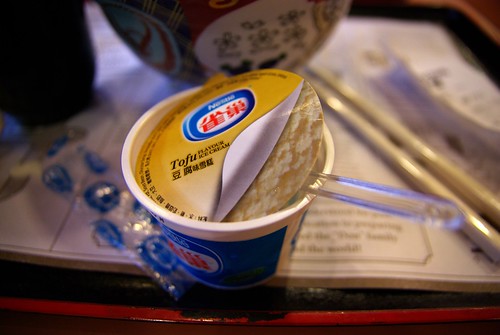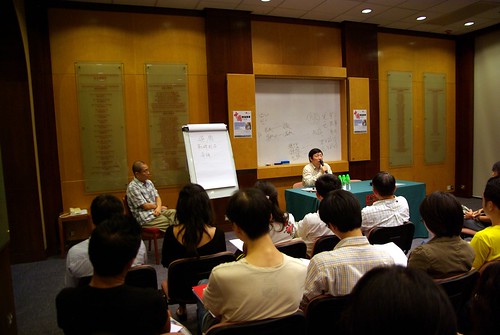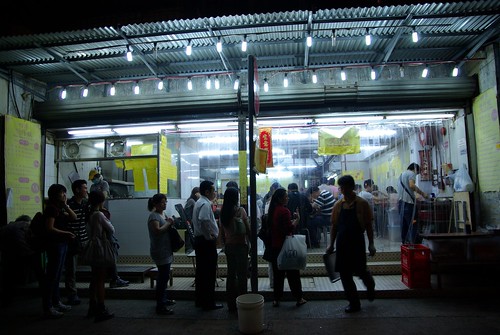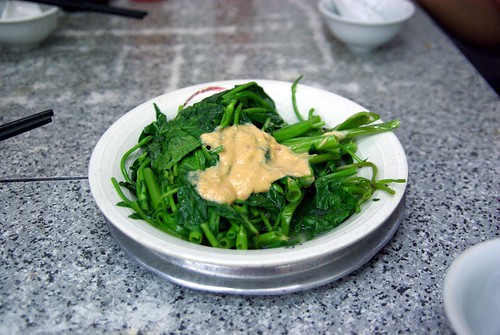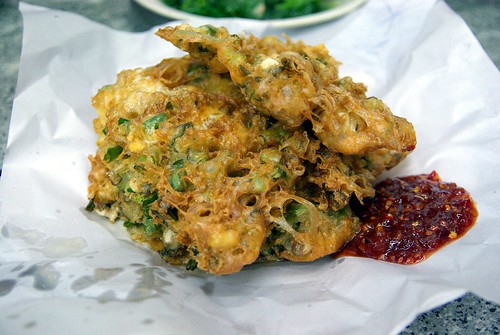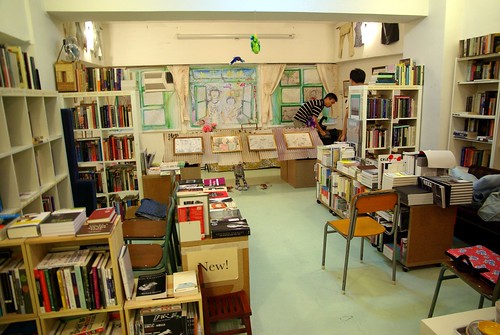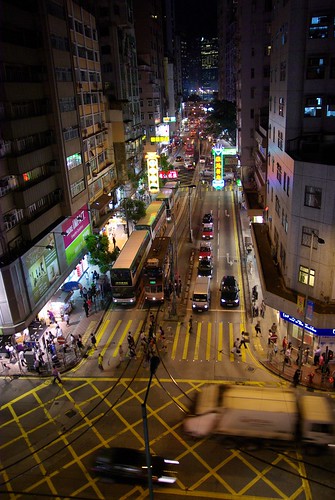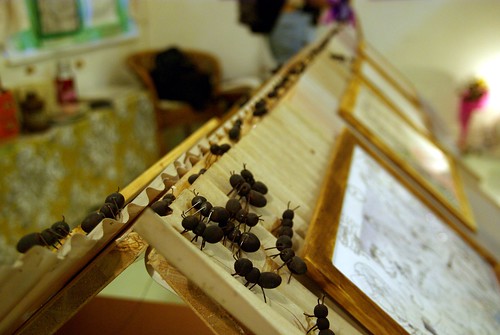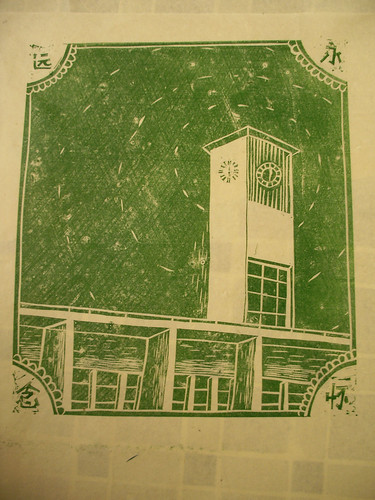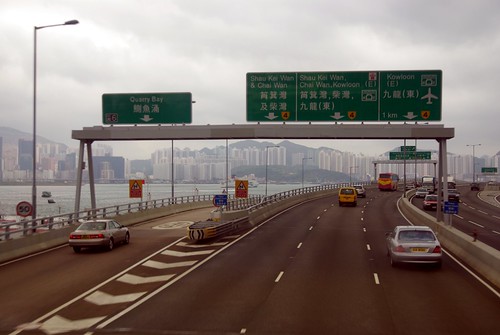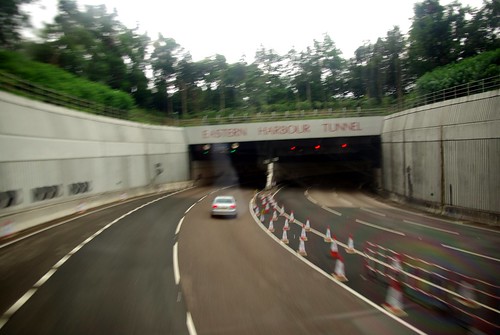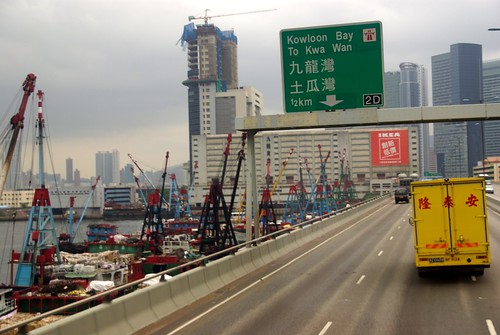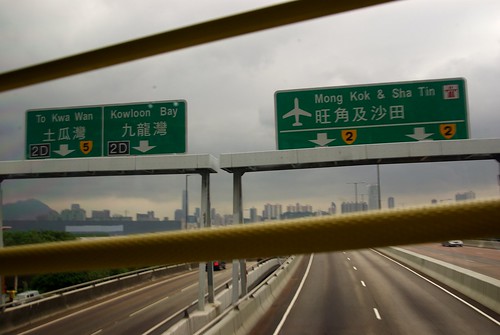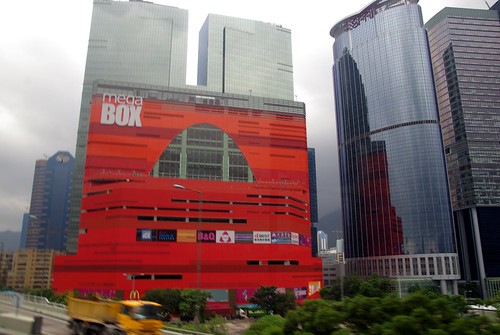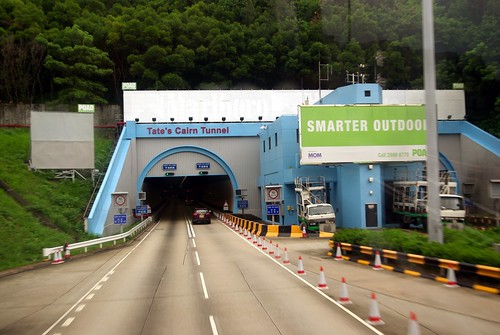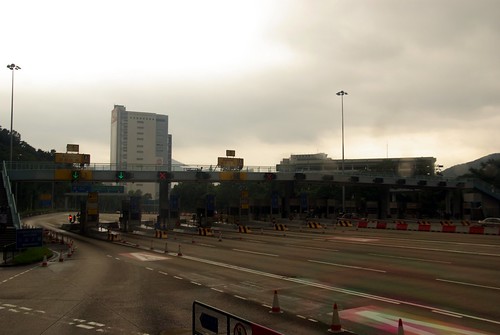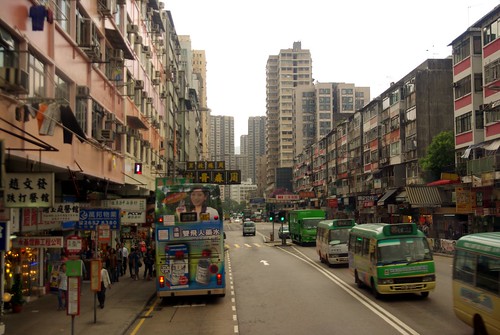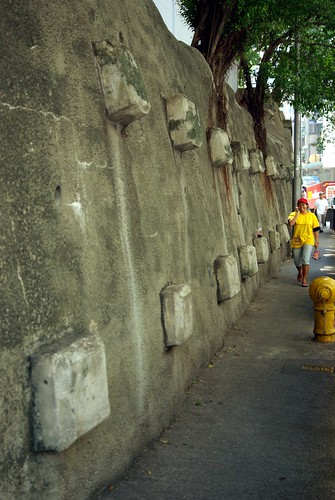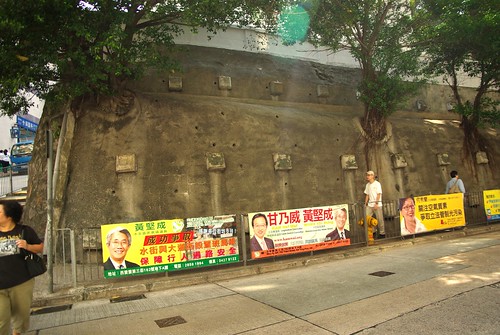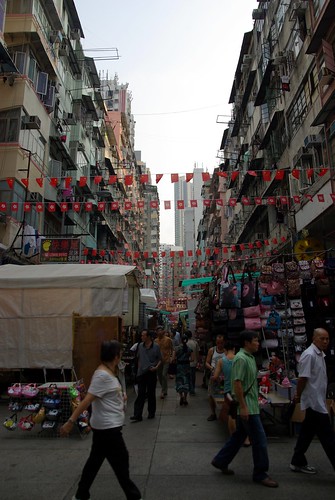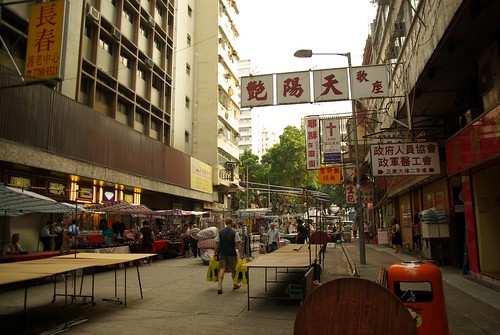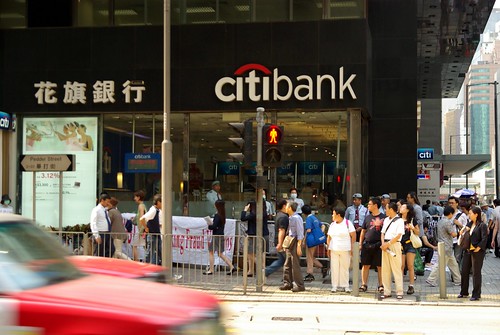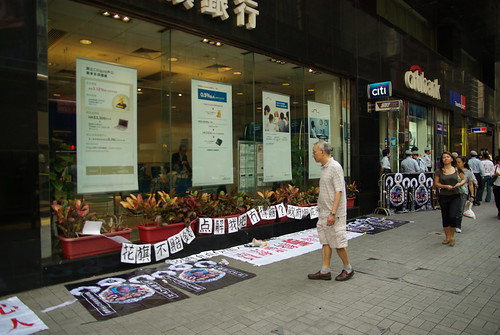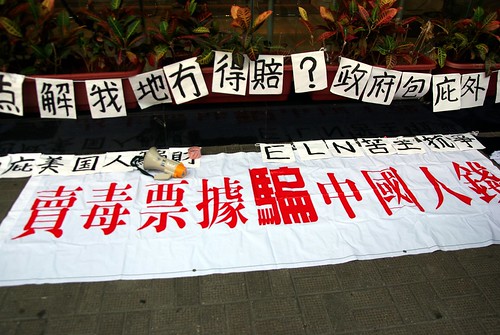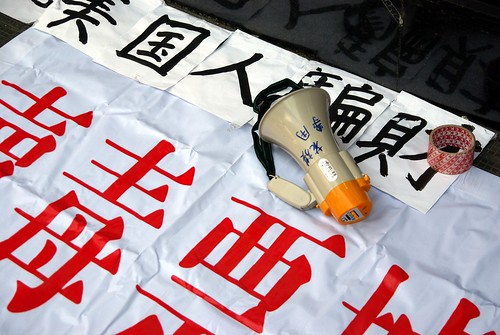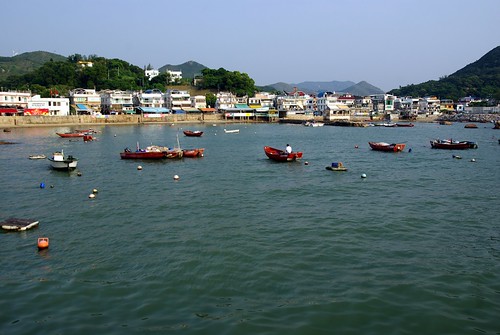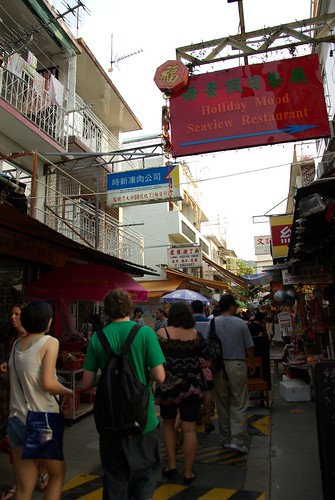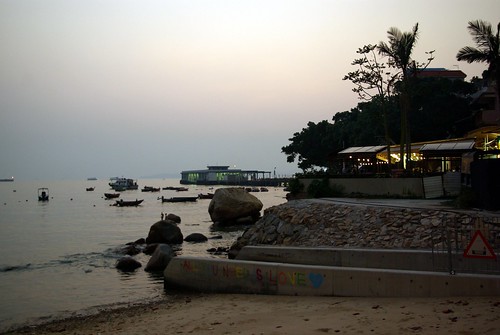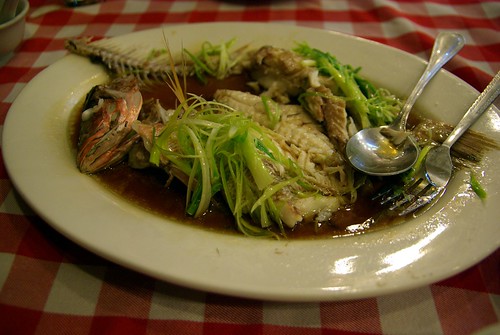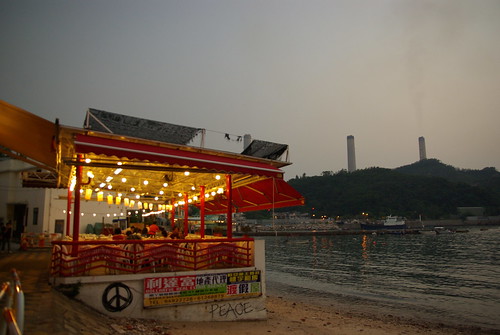I am not generally a fan of dim sum or yum cha, the terms usually used interchangeably to describe a Chinese brunch popularized by the Cantonese (and exported to the West by them). Dim sum literally means “bite heart” or “touch the heart” says Wikipedia, while Yum cha literally means “drink tea” and describe the … Continue reading “叁去壹 (Sam Hui Yat) dim sum in Sai Ying Pun”
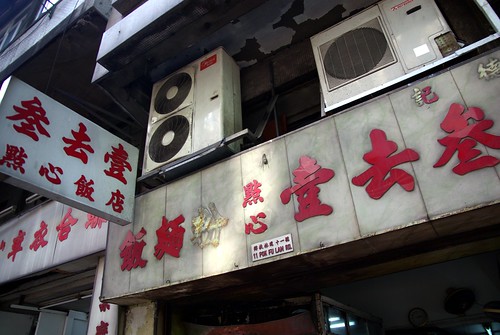
I am not generally a fan of dim sum or yum cha, the terms usually used interchangeably to describe a Chinese brunch popularized by the Cantonese (and exported to the West by them). Dim sum literally means “bite heart” or “touch the heart” says Wikipedia, while Yum cha literally means “drink tea” and describe the activity of relaxing around a cup of tea (and eating dim sum, sometimes).
I’ve typically only eaten in large dim sum halls, here in Hong Kong as well as back home in Montreal. In Hong Kong, family would bring me to restaurants with overly nice decors. However, my tastes tend to range around the “beau, bon, pas cher”, a French expression from home that basically means “nice, good, inexpensive”.
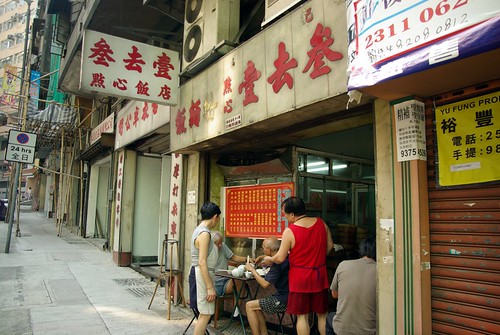
叁去壹(點心粉麵飯) = Sam Hui Yat = Three Goes One
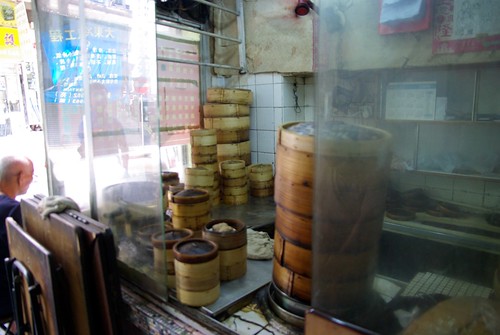
Steamers
From the tram stop in Sai Ying Pun (西營盤), we walked only a few minutes to get to 叁去壹 (Sam Hui Yat – something like Three Goes One). Located at the very beginning of Pokfulam Road (corner with First St), which eventually leads to the University of Hong Kong, some 200m up the hill, the restaurant is in fact an unassuming eatery, with no more than a dozen tables for about 30 clients at once. It was a far cry from what I imagined, perhaps because I’ve always been used to being served dim sum in large restaurants (here in Hong Kong, restaurants with carts also virtually don’t exist anymore).
I originally horribly missed my first occasion to eat here with Chinese speakers and on the time that I actually went, I was only with my non-Chinese-speaking friend. Why is that so important? Because there is not a single English character in the entire restaurant! Unable to get a good hold of the menu, I resorted to asking the waiter, who was very patient and cordial in helping me out. After listening to the chef’s suggestions, I decided to go for sure bets, namely siumai (燒賣 – seasoned ground pork in wrapper), har gow (蝦餃 – shrimp dumpling) and steamed black-bean spare ribs (豉汁排骨). It’s also a surcharge of $HKD3 for tea per person.
For the record, the siumai was juicy inside and the har gow’s shrimp crunched right under one’s teeth and the ribs were very tender. Don’t feel intimidated by the “minimalistic” setting, because the food is in fact excellent.
At the front of the restaurant was the “steamers station”, where the chef (the guy in a red sleeveless shirt) presumably steamed orders of dumplings and other dim sum. The order came very quickly, as you’d expect for a diner. To pay, don’t necessarily expect the waiter to give you the bill: just hand him the money as if you knew the total price and he will count the number of steamers (they are invariably $HKD9) or lotus leaves that you have spread out in front of you. It’s also a surcharge of $HKD3 for tea per person.
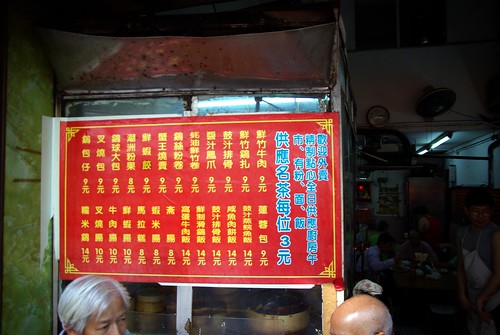
Menu (click for translation notes on Flickr)
Of course, the menu is all in Chinese, and there is another menu in the restaurant that is for non-dim sum dishes, such as fried rice and noodles. Aside from those aforementioned, Sam Hui Yat has a complete lineup of dim sum classics: fong zao (鳳爪 – chicken feet), chiu chow fun go (潮州粉果 – Chaozhou-style dumplings), char siu pao (叉燒包 – pork bun), lo mai gai (糯米雞 – lotus leaf chicken rice) and a variety of cheong fun (腸粉 – rice rolls).
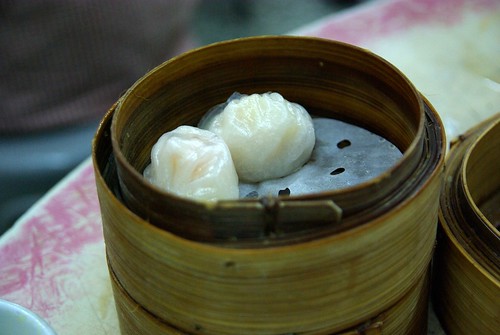
Har Gow (蝦餃)
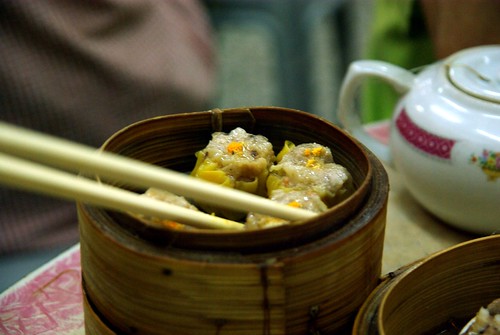
Shaomai (燒賣)
It is to be noted that the restaurant closes at 2:30PM in the afternoon. To get there, the easiest way is to take the tram going west from Central or Sheung Wan MTR (take the trams going to Whitty Street Depot or Kennedy Town). Then, walk up the slope on Western St., until you get to Pokfulam Road.
11 Pokfulam Road, Sai Ying Pun, Sheung Wan (map)

